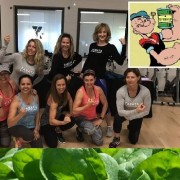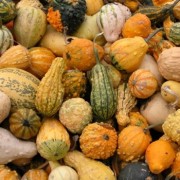Got a picky eater? Try these healthy recipes
Three easy healthy recipes for picky eaters, whether or not they’re kids!
Got a picky eater? Whether your picky loved one is a kid or a grown up, here are three easy recipes to help picky eaters of all ages eat more spinach, kale, and sweet potatoes, plus other veggies… with or without their knowledge.
To make it even easier, you can get many of these ingredients and sides home-delivered from Seasonal Roots’ year-round farmers market. Check it out here. If you’re not a member yet, the 30-day money back guarantee makes it easy to give it a try.
HEALTHY SPINACH RECIPE
Who doesn’t love meatballs? And they’re a great place to hide the greens!
Sneaky Spinach Meatballs
4 servings
For a quick delicious meal, serve with your favorite local artisan’s prepared sauce, pasta, and a simple side of apple slices.
INGREDIENTS:
- 1 c fresh local bread, cut or torn into pieces, or substitute Seasonal Roots’ gluten-free options
- 3/4 c Oberweis milk, or water
- 1 lb grassfed beef or a mixture of grassfed meats of your choice
- 2 cloves garlic, minced
- 1 pastured egg
- 1/2 c cheese (parmesan or your fave), grated, or substitute Unmoo’s Notz
- handful parsley and basil, chopped finely (optional)
- 1-3 handfuls spinach or kale, puréed in a blender to make it invisible
- salt/pepper to taste
DIRECTIONS:
- Get ready to bake or fry, your choice. Preheat oven to 350 or coat frying pan with grapeseed oil or vegetable oil.
- Soak bread in bowl of milk/water.
- Combine ground beef, garlic, egg, cheese, and greens. Feel free to use or mix together different types of ground meat: veal, pork, chicken, etc.
- Mix the soaked bread into the ground beef mixture and add milk. Form into balls.
- Oven: Bake meatballs on cooking tray for about 15 minutes, depending on size. Stovetop: Heat frying pan before adding meatballs for a nice crust.
- Meanwhile, boil your favorite pasta according to package directions and heat up a local artisan sauce in a saucepan or microwave. Dish up and serve!
HEALTHY KALE RECIPE
Serve a smoothie as a drink, or for a really picky eater, go one step further — popsicles! Kids and adults alike sometimes don’t care for the texture of smoothies, but most of the time we all love popsicles.
Hide the Kale Smoothie Popsicles
2 servings as a smoothie / or many popsicles
When bananas are a little past their prime, that’s when they’re perfect for smoothies, so pop them in the freezer. That way they’ll stop ripening and will be the right texture and temp for a smoothie whenever you’re ready to whip these up.
TIP: Freeze the kale ahead of time, too. Wash it, dry it, and throw it in the freezer as soon as you get it. Freezing it makes it less bitter. It will keep for weeks, even months, so you’ll have it whenever you need it with most of its nutrients intact.
INGREDIENTS:
- 1 frozen ripe banana, peeled and sliced
- 1/2 c frozen mixed berries, blueberries, or fresh apple, cored and chopped
- 1 T chia seeds
- 2 c frozen kale, chopped if leaves are large
- 2/3 c pomegranate juice (it hides the taste of kale best)
- 3/4-1/2 c water, or milk for more creaminess
- 2/3 c pomegranate juice (it hides the taste of kale best)
- 1 t – 1 T honey (for more sweetness – optional)
- 1 T peanut or almond butter (optional)
DIRECTIONS:
- Add all ingredients to a blender.
- Blend until smooth, adding more water as needed. Taste and adjust flavors as needed. Add more banana or honey for more sweetness as needed.
- Pour into popsicle molds, freeze, and enjoy for a snack or dessert.
HEALTHY SWEET POTATO RECIPE
Actually, you can hide just about anything, including sweet potatoes! Use puréed or mashed sweet potatoes to thicken your favorite chili. It’s delish! Don’t have a chili fave? Try this one…
Secret Sweet Potato Chili
Serves at least 4
This is a good recipe for a busy day at home. Throw it all in one big soup pot or Dutch oven and let it cook — the longer the better! In fact, you can make it ahead and refrigerate or freeze for later.
Also, there’s a lot of wiggle room when it comes to the amount of each ingredient. So feel free to adjust everything to your taste for spice or thickness. Serve with fresh, locally baked crusty bread, and/or over spaghetti noodles, plus a side of carrot sticks… or if your picky eater “does” salad, go for the green — just keep it simple: lettuce or arugula, craisins, and sunflower seeds, topped with bits of cheese, for instance.
TIP: Bake sweet potatoes ahead of time, then slip off the skins and either mash them or give ’em a spin in the blender.
INGREDIENTS:
- 3-6 slices pastured nitrate-free bacon, sliced
- 1-3 cloves garlic, minced
- 1 onion, chopped or diced
- 1-3 lbs grassfed chuck roast or similar cut, cubed
- 4-8 tomatoes, chopped, or up to a 20oz can of pureed tomatoes
- 1 c or more water, as needed
- 1 c or more mashed or pureed baked sweet potatoes (optional)
- 1 can kidney beans (optional)
- 6 slices of jalapeno (jarred or fresh), minced, discard seeds
- 1 t salt (optional)
- 1 T chili powder, or to taste
- 1 T cumin
- 1 T oregano, dried (if fresh, use 3x more)
DIRECTIONS:
- Don’t bother pulling the bacon slices apart. Just pull them out of the package all stuck together and cut them up as is into half-inch slices. Use a sharp knife or kitchen shears, whichever you find easier. Fry in a big, deep soup pot.
- As bacon bits start to brown, add garlic, then onion.
- When onion starts to turn translucent, add beef cubes to brown. If you’re making a larger amount of chili, dump the bacon, garlic, and onion into a bowl on the side and brown cubes in batches, pouring off liquid as needed and dumping each batch in the bowl. When all the cubes are browned, dump everything from the bowl back into the pot.
- Add tomatoes, fresh or canned, and enough water (if needed) to just barely cover everything. Increase temperature to bring to a boil.
- While waiting for it to boil, stir in sweet potato, beans (if using), jalapeno, and seasonings.
- When it reaches a boil, reduce heat to simmer, and cover. Stir occasionally and add water as needed while it cooks for at least an hour. Two hours is better. You’ll know it’s done when the meat cubes are so tender they fall apart easily with a fork.
- After you turn the heat off, it will stay hot on the stove for a good hour. You can also reheat it later. Then ladle it up and enjoy!
FOR MORE INFO ABOUT. . .
…Tips to help kids eat more veggies, click here.
…Signing up for Seasonal Roots home-delivered farmers market, click here.
…How to order from Seasonal Roots, click here.
…Seasonal Roots, click here.













